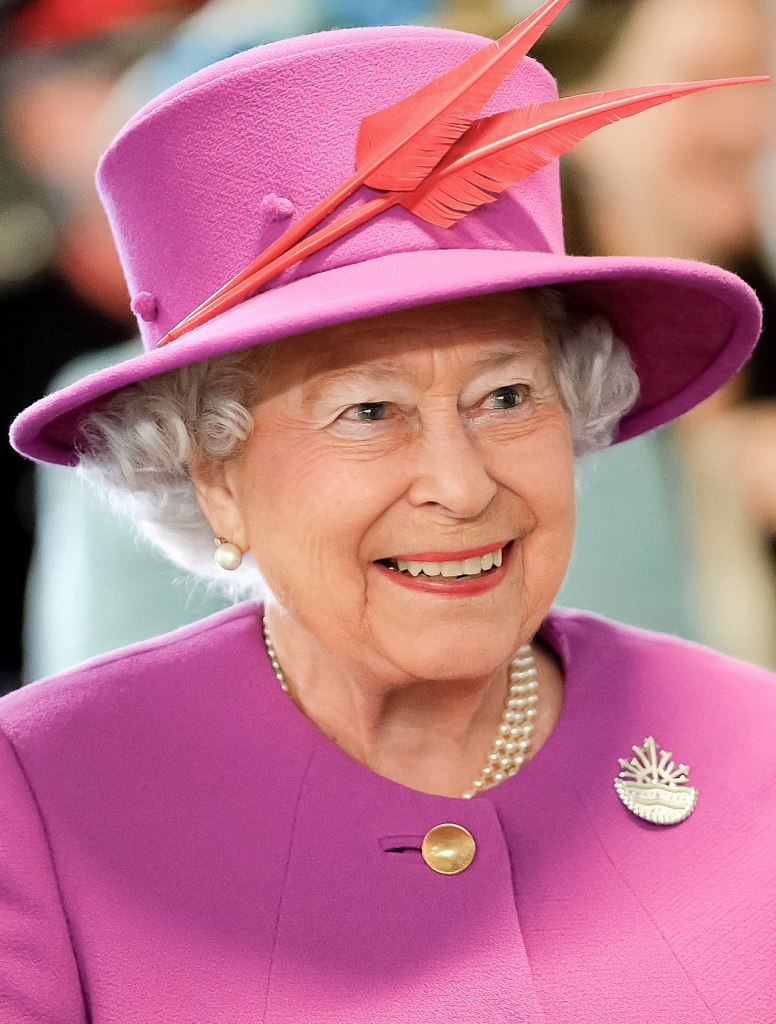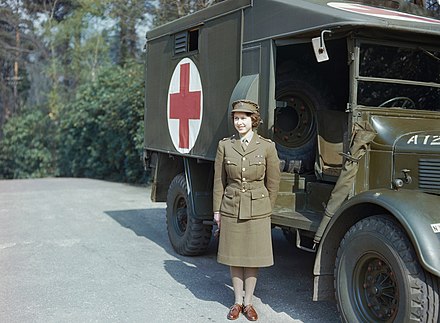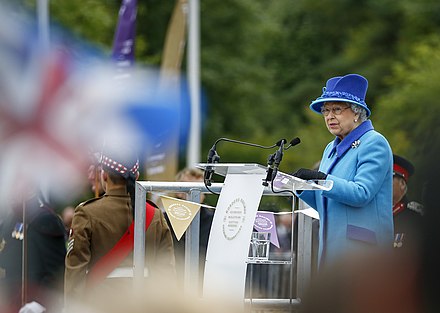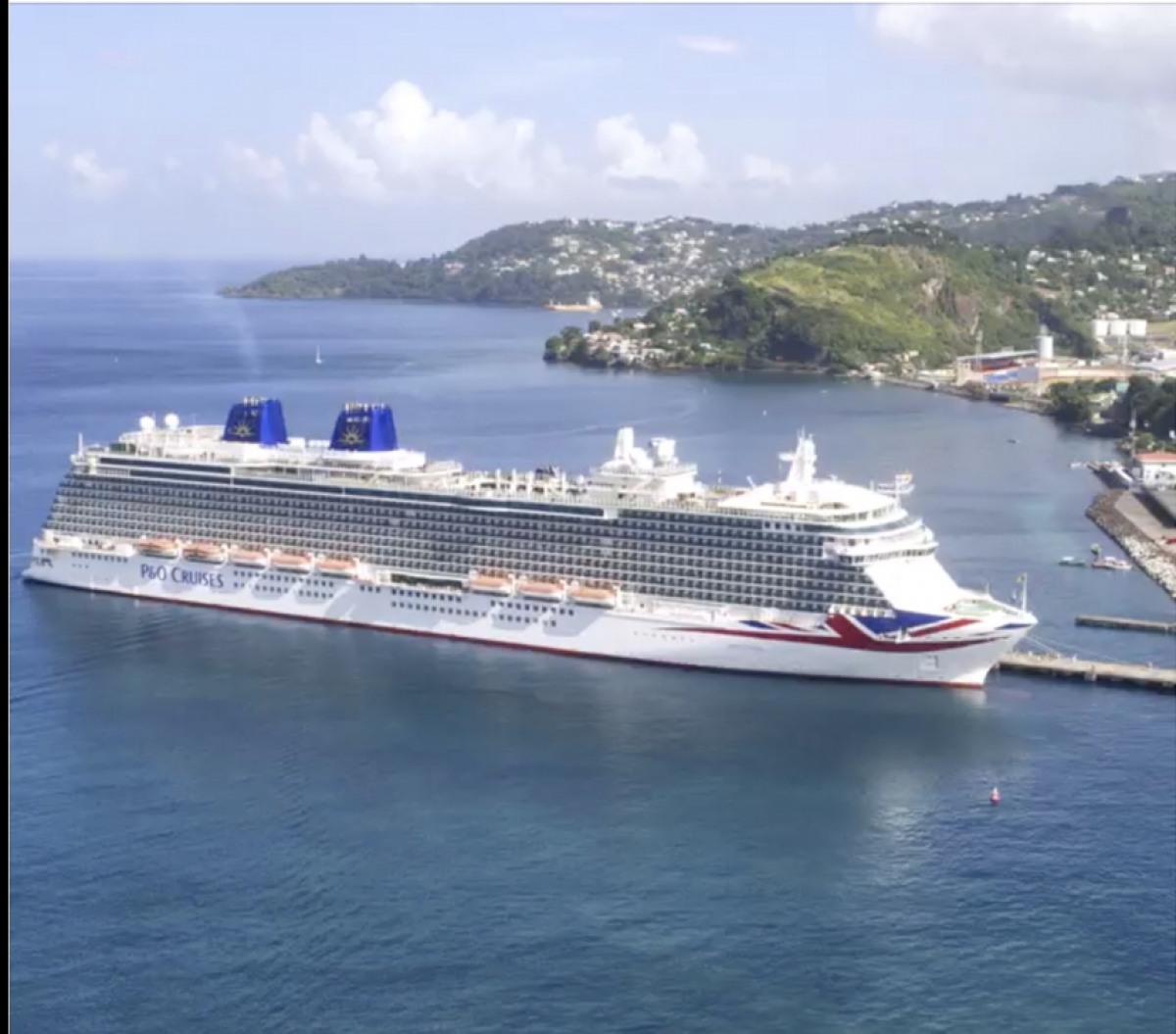Queen Elizabeth II was born Elizabeth Alexandra Mary on 21 April 1926 and is the present Queen of the United Kingdom and fourteen other Commonwealth realms. She was born in Mayfair, London as the first child of the Duke and Duchess of York. A while later the duke then became King George VI, whilst the duchess became Queen of the United Kingdom and the Dominions of the British Commonwealth from 11 December 1936 to 6 February 1952. After her husband died, she was known as ‘Queen Elizabeth the Queen Mother’, and this was to avoid confusion with her daughter, Queen Elizabeth II, whose father had acceded to the throne in 1936 upon the abdication of his brother, King Edward VIII, making Elizabeth the heir presumptive. Elizabeth was educated privately at home and began to undertake public duties during the Second World War, serving in the Auxiliary Territorial Service (ATS). In November 1947 she married Philip Mountbatten, a former prince of Greece and Denmark, and their marriage lasted 73 years until Philip’s death in Windsor Castle at the age of 99 on the morning of 9 April 2021, just two months before his 100th birthday. They had four children; Charles, Prince of Wales, Anne, Princess Royal, Prince Andrew, Duke of York and Prince Edward, Earl of Wessex. When her father died in February 1952 Elizabeth, then 25 years old, became Queen regnant of seven independent Commonwealth countries as well as Head of the Commonwealth. Significant events include her coronation in 1953 and the celebrations of her Silver, Golden and Diamond jubilees. To celebrate her Platinum jubilee this year there will be an extra bank holiday and the usual Spring bank holiday is moved from the end of May to the start of June to create a four-day Jubilee bank holiday weekend from Thursday 2 June to Sunday 5 June.

Elizabeth Alexandra Mary was born on 21 April 1926, during the reign of her paternal grandfather, King George V. Her father, the Duke of York (later King George VI) was the second son of the King. Her mother, the Duchess of York was the youngest daughter of Scottish aristocrat Claude Bowes-Lyon, 14th Earl of Strathmore and Kinghorne. Elizabeth was named Elizabeth after her mother, Alexandra after her paternal great-grandmother who had died six months earlier and Mary after her paternal grandmother. Called ‘Lilibet’ by her close family, based on what she called herself at first, she was cherished by her grandfather, George V, whom she affectionately called ‘Grandpa England’ and during his serious illness in 1929 her regular visits were credited in the popular press and by later biographers in raising his spirits and aiding his recovery. Elizabeth’s only sibling, Princess Margaret, was born in 1930. The two princesses were educated at home under the supervision of their mother and their governess, with lessons concentrating on history, language, literature, and music. During her grandfather’s reign, Elizabeth was third in the line of succession to the British throne behind her uncle Edward and her father, so although her birth generated public interest she was not expected to become queen, as Edward was still young and likely to marry and have children of his own, who would precede Elizabeth in the line of succession. When her grandfather died in 1936 and her uncle succeeded as Edward VIII, she became second in line to the throne, after her father. Later that year, Edward abdicated following his proposed marriage to the divorced socialite Wallis Simpson which provoked a constitutional crisis. As a result, Elizabeth’s father became king, taking the regnal name of George VI and since Elizabeth had no brothers, she became heir presumptive. Elizabeth’s parents toured Australia and New Zealand in 1927, then in 1939 they toured Canada and the United States but Elizabeth remained in Britain since her father thought her too young to undertake public tours. She ‘looked tearful’ as her parents departed. They corresponded regularly and she and her parents made the first royal transatlantic telephone call on 18 May.

In September 1939, Britain entered the Second World War. Lord Hailsham suggested that Princesses Elizabeth and Margaret should be evacuated to Canada to avoid the frequent aerial bombings of London by the Luftwaffe but this was rejected by their mother, who declared, “The children won’t go without me. I won’t leave without the King. And the King will never leave. In 1940, the 14-year-old Elizabeth made her first radio broadcast during the BBC’s Children’s Hour, addressing other children who had been evacuated from the cities. She stated: “We are trying to do all we can to help our gallant sailors, soldiers and airmen, and we are trying, too, to bear our own share of the danger and sadness of war. We know, every one of us, that in the end all will be well”. In 1943, Elizabeth undertook her first solo public appearance on a visit to the Grenadier Guards, of which she had been appointed colonel the previous year. As she approached her 18th birthday, parliament changed the law so she could act as one of five Counsellors of State. These are senior members of the British royal family to whom the monarch can delegate and revoke royal functions through letters patent under the Great Seal, to prevent delay or difficulty in the dispatch of public business in the case of their illness (except total incapacity) or of their intended or actual absence from the United Kingdom. This was done in the event of her father’s incapacity or absence abroad, such as his visit to Italy in July 1944. In February 1945, she was appointed as an honorary second subaltern in the ATS, she trained as a driver and mechanic and five months later was given the rank of honorary junior commander. Then on Victory in Europe (VE) Day, Elizabeth and Margaret mingled incognito with the celebrating crowds in the streets of London. Elizabeth said later in a rare interview, “We asked my parents if we could go out and see for ourselves. I remember we were terrified of being recognised… I remember lines of unknown people linking arms and walking down Whitehall, all of us just swept along on a tide of happiness and relief”. She went on her first overseas tour in 1947, accompanying her parents through southern Africa. In a broadcast to the British Commonwealth on her 21st birthday, she made the following pledge: “I declare before you all that my whole life, whether it be long or short, shall be devoted to your service and the service of our great imperial family to which we all belong.”

Elizabeth met her future husband, Prince Philip of Greece and Denmark, in 1934 and 1937. After another meeting at the Royal Naval College in Dartmouth in July 1939, Elizabeth, though only thirteen years old, said she fell in love with Philip and they began to exchange letters. She was 21 when their engagement was officially announced on 9 July 1947. The engagement was not without controversy however, as Philip had no financial standing, was foreign-born (though a British subject who had served in the Royal Navy throughout the Second World War) and had sisters who had married German noblemen with Nazi links. Some biographies reported that Elizabeth’s mother had reservations about the union initially, and teased Philip but in later life the Queen Mother told a biographer that Philip was “an English gentleman”. Before the marriage, Philip renounced his Greek and Danish titles, officially converted from Greek Orthodox to Anglican and adopted the name of Lieutenant Philip Mountbatten, taking the surname of his mother’s British family. Just before the wedding, he was created Duke of Edinburgh and granted the style ‘His Royal Highness’. Elizabeth and Philip were married on 20 November 1947 at Westminster Abbey and they received 2,500 wedding gifts from around the world. Elizabeth gave birth to her first child, Prince Charles, on 14 November 1948. One month earlier, the King had issued letters patent to allow her children to use the style and title of a royal prince or princess, to which they otherwise would not have been entitled as their father was no longer a royal prince. Their second child, Princess Anne, was born in 1950. Following their wedding, the couple leased Windlesham Moor near Windsor Castle until July 1949, when they took up residence at Clarence House in London. At various times between 1949 and 1951, the Duke of Edinburgh was stationed in the British Crown Colony of Malta as a serving Royal Navy officer. He and Elizabeth lived intermittently in Malta for several months at a time in the rented home of Philip’s uncle, Lord Mountbatten. Their children remained in Britain.

King George VI’s health declined during 1951, and Elizabeth frequently stood in for him at public events. In October 1951, when she toured Canada and visited President Harry S Truman in Washington, D.C. her private secretary carried a draft accession declaration in case the King died whilst she was there. In early 1952, Elizabeth and Philip set out for a tour of Australia and New Zealand by way of Kenya and on 6 February 1952, they had just returned to their Kenyan home after a night spent at the Treetops hotel when word arrived of the death of the King and consequently Elizabeth’s immediate accession to the throne. Philip broke the news to the new queen. She chose to retain Elizabeth as her regnal name, she was therefore called Elizabeth II, which offended many Scots, as she was the first Elizabeth to rule in Scotland. She was proclaimed queen throughout her realms and the royal party hastily returned to the United Kingdom. She and the Duke of Edinburgh moved into Buckingham Palace. As a result of her accession, it seemed probable the royal house would bear the Duke of Edinburgh’s name, in line with the custom of a wife taking her husband’s surname on marriage. The Duke’s uncle, Lord Mountbatten, advocated the name ‘House of Mountbatten’ and Philip suggested ‘House of Edinburgh’, after his ducal title. However the British Prime Minister, Winston Churchill, and Elizabeth’s grandmother, Queen Mary, favoured the retention of the House of Windsor and so on 9 April 1952 Elizabeth issued a declaration that ‘Windsor’ would continue to be the name of the royal house. The Duke complained, “I am the only man in the country not allowed to give his name to his own children”. In 1960, after the death of Queen Mary in 1953 and the resignation of Churchill in 1955, the surname Mountbatten-Windsor was adopted for Philip and Elizabeth’s male-line descendants who do not carry royal titles. Despite the death of Queen Mary on 24 March 1953, the planned coronation on 2 June that year went ahead, as Mary had asked before she died. The ceremony in Westminster Abbey, with the exception of the anointing and communion, was televised for the first time. At her instructions, Elizabeth’s coronation gown was embroidered with the floral emblems of Commonwealth countries. Elizabeth gave birth to her third child, Prince Andrew, in 1960, which was the first birth to a reigning British monarch since 1857. Her fourth child, Prince Edward, was born in 1964.
In 1977, Elizabeth marked the Silver Jubilee of her accession. Parties and events took place throughout the Commonwealth, many coinciding with her associated national and commonwealth tours and these celebrations re-affirmed the Queen’s popularity. But it was in a speech on 24 November 1992, to mark her Ruby Jubilee on the throne that Elizabeth called 1992 her ‘annus horribilis’, or horrible year. Republican feeling in Britain had risen because of press estimates of the Queen’s private wealth, which were contradicted by the Palace, and reports of affairs and strained marriages amongst her extended family. In March, her second son, Prince Andrew, and his wife Sarah separated and in April, her daughter Princess Anne divorced Captain Mark Philips. Then in November, a large fire broke out at Windsor Castle, one of her official residences. The monarchy came under increased criticism and public scrutiny. In an unusually personal speech, the Queen said that any institution must expect criticism, but suggested it be done with “a touch of humour, gentleness and understanding”. On the eve of the new millennium, the Queen and the Duke of Edinburgh boarded a vessel from Southwark, bound for the Millennium Dome. Before passing under Tower Bridge, the Queen lit the National Millennium Beacon in the Pool of London using a laser torch and shortly before midnight she officially opened the Dome. During the singing of Auld LangSyne, the Queen held hands with the Duke and British Prime Minister Tony Blair. It was in 2002 the Queen marked her Golden Jubilee, the 50th anniversary of her accession. Her sister and mother had died in February and March respectively and the media speculated on whether the Jubilee would be a success or a failure. She again undertook an extensive tour of her realms, beginning in Jamaica in February, where she called the farewell banquet “memorable” after a power cut plunged the King’s House, the official residence of the governor-general, into darkness. In the same way as 1977, there were a great many street parties and commemorative events, also monuments were named to honour the occasion. One million people attended each day of the three-day main Jubilee celebration in London and the enthusiasm shown for the Queen by the public was greater than many journalists had anticipated.

The Queen’s Diamond Jubilee in 2012 marked her sixty years on the throne and celebrations were held throughout her realms, the wider Commonwealth and beyond. She and her husband undertook an extensive tour of the United Kingdom, whilst her children and grandchildren embarked on royal tours of other Commonwealth states on her behalf. On 4 June, Jubilee beacons were lit around the world. During a tour of Manchester as part of her Jubilee celebrations, the Queen made a surprise appearance at a wedding party at Manchester Town Hall, which then made international headlines. In November, the Queen and her husband celebrated their Sapphire wedding anniversary, their 65th and it was on 18 December she became the first British sovereign to attend a peacetime cabinet meeting since George III in 1781. The Queen, who had opened the 1976 Summer Olympics in Montreal, also opened the 2012 Summer Olympics and Paralympics in London, making her the first head of state to open two Olympic Games in two countries. For the London Olympics, she played herself in a short film as part of the opening ceremony, alongside actor Daniel Craig as James Bond. On 4 April 2013 she received an honorary BAFTA for her patronage of the film industry and was called “the most memorable Bond girl yet” at the award ceremony.

The Queen, pictured in 2015 on the day she became the longest-reigning British monarch to date and in her speech, she said she had never aspired to achieve that milestone. She had surpassed her great-great-grandmother, Queen Victoria on 21 December 2007 to become the longest-lived British monarch and the longest-reigning British monarch, also the longest-reigning queen regnant and the longest-reigning female head of state in the world. She became the oldest current monarch after King Abdullah of Saudi Arabia died on 23 January 2015 and she later became the longest-reigning current monarch and the longest-serving current head of state following the death of King Bhumibol of Thailand on 13 October 2016, also the oldest current head of state on the resignation of Robert Mugabe on 21 November 2017. On 6 February 2017, she became the first British monarch to commemorate a Sapphire Jubilee and on 20 November she was the first British monarch to celebrate a Platinum wedding anniversary. Philip had retired from his official duties as the Queen’s consort in August 2017.

On 19 March 2020, as the Covid-19 pandemic hit the United Kingdom, the Queen moved to Windsor Castle and sequestered there as a precaution. All public engagements were cancelled and Windsor Castle followed a strict sanitary protocol. On 5 April, in a televised broadcast watched by an estimated 24 million viewers in the UK, she asked people to “take comfort that while we may have more still to endure, better days will return; we will be with our friends again; we will be with our families again; we will meet again.” And on 8 May, the 75th anniversary of VE Day, in a TV broadcast at 9:00pm (the exact time at which her father George VI had broadcast to the nation on the same day in 1945) she asked people to “never give up, never despair”. In October, she visited the UK’s Defence, Science and Technology Laboratory in Wiltshire, her first public engagement since the start of the pandemic. On 4 November, she appeared masked for the first time in public, during a private pilgrimage to the Tomb of the Unknown Warrior at Westminster Abbey, to mark the centenary of his burial. Prince Philip died on 9 April 2021 after 73 years of marriage, making Elizabeth the first British monarch to reign as a widow or widower since Victoria. She was reportedly at her husband’s bedside when he died, and remarked in private that his death had “left a huge void”. Due to the restrictions in place in England at the time, the Queen sat alone at Philip’s funeral service, which evoked sympathy from people around the world. In her Christmas broadcast that year, she paid a personal tribute to her “beloved Philip”, saying, “That mischievous, inquiring twinkle was as bright at the end as when I first set eyes on him”. The Queen’s Platinum Jubilee began on 6 February 2022, marking 70 years since she acceded to the throne on her father’s death. She held a reception for pensioners, local Women’s Institute members and charity volunteers on the eve of the date at Sandringham House. In her Accession Day message, Elizabeth renewed her commitment to a lifetime of public service, which she originally made in 1947. The Queen does not intend to abdicate, although Prince Charles has begun to take on more of her duties as she grows older and begins carrying out fewer public engagements. The popularity of the monarchy remains high during the Jubilee, as a poll conducted in March 2022 has revealed.

With all that is going on at this time to mark the Queen’s Platinum Jubilee, I wanted to find some particular words to write, perhaps about all that has happened to us all in the last seventy years and I have found the following. It written by a good friend and I copy it with grateful thanks.
“The wisdom that I learn as getting old is to be simple: accept mistakes if I do something wrong, although it gives me severe pain at the moment, spend time reflecting on it, and ask for forgiveness, instead of giving hundreds of psychological excuses to myself and others which sometimes numbs our moral sense. I rather found this gives me much freedom not lingering around the memories from the past but letting me fully live in the present moment. The advancement of psychology seems to help our understanding of human behaviours better, but the basics do not age.”
I end this week with a favourite of mine.
“We are all visitors to this time, this place. We are just passing through. Our
purpose here is to observe, to learn, to grow, to love… and then we return home.” ~ Australian Aboriginal Proverb
Click: Return to top of page or Index page
